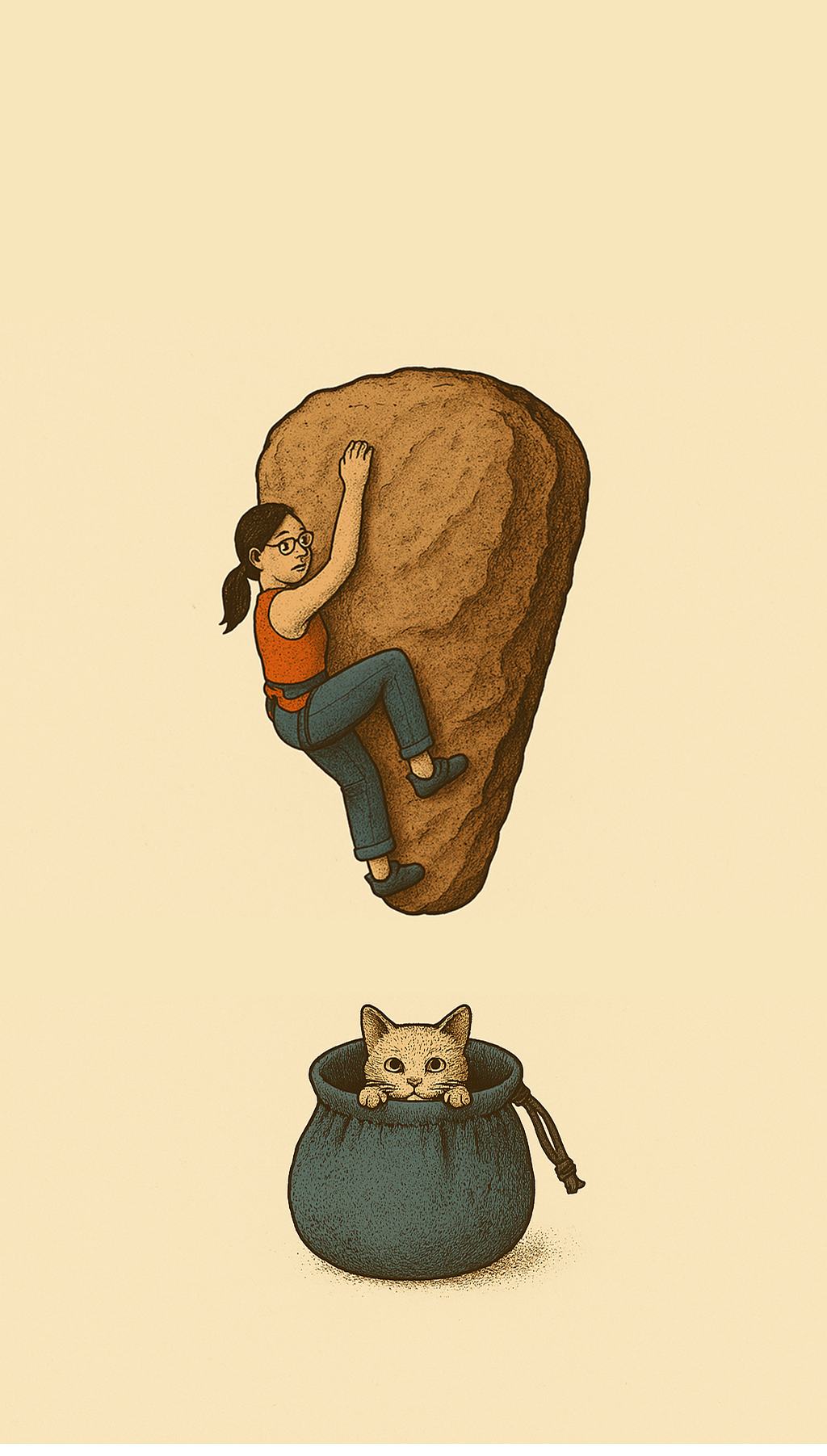Marginal Choices for Motor Control: When and Why Our Arms Might Bend
A practice with the aim of noticing stress-induced arm bending in everyday movement in non-climbing contexts.
Purpose:
To uncover the hidden why behind bent arms during climbing—and to develop a subtle awareness of how stress, precision, and control-seeking leak into our movement patterns even off the wall.
Context & Rationale
We’re often told:
“Don’t climb with bent arms—it wastes energy.”
But that advice rarely addresses why we bend them in the first place.
It’s easy to assume it's pure laziness or weakness. But in my experience, arm bending often emerges in moments of subtle stress or pressure.
Even outside of climbing, we see this pattern.
For example, while squatting down to clean cat litter, I noticed:
Starting with straight arms, hips leading the squat.
Suddenly bending my arms jerkily mid-move—not because my hips couldn’t lower me, but because I was reacting to a fear of making a mess or “doing it wrong.”
The arm bend was an unconscious attempt to control the precision of the movement, rushing to avoid perceived negative outcomes.
This is the crux:
Arm bending can be a micro-level stress response, trying to force accuracy and avoid perceived failure.
And that same pattern shows up on the wall.
The Drill
1️⃣ Choose a daily task with mild stakes
Cleaning up pet litter or food.
Loading the dishwasher.
Sweeping up something that might scatter.
Gardening.
Folding laundry.
The key is: there’s a slight sense of “I want to do this well without making a mess.”
2️⃣ Set your intention
Begin with arms as straight as possible.
Let your hips, knees, ankles, and torso initiate movement.
Don’t force it—just observe the plan.
3️⃣ Slow it down
Perform the movement deliberately.
Give yourself time to feel the weight shifts, joint angles, and balance.
4️⃣ Notice the precise moment arms want to bend
Is it when you get close to the floor?
When something might spill or break?
When you lose balance?
When you feel rushed or judged (even by yourself)?
5️⃣ Reflect
Was the arm bend truly necessary for strength?
Or was it a reactive strategy to control an outcome?
What emotional or cognitive triggers coincided with it?
Key Insight
Arm bending often isn’t just biomechanics—it’s psychology.
It can be a protective strategy to avoid making mistakes, to speed up, to impose fine motor control when we don’t trust our lower body to do the work.
Transferring to Climbing
When you’re on the wall:
Recognize that bent arms often appear in the crux, at transitions, or when fear of falling or failing kicks in.
Understand that your brain might be “grabbing” with the arms to control uncertainty.
Instead of simply “don’t bend,” ask what am I trying to control? What outcome am I afraid of here?
Closing Reflection
Use daily life as training ground.
Cultivate awareness of these micro-moments.
Not to shame or judge—but to build trust in your body’s larger, more powerful movement systems.
Because real efficiency isn’t just about strong arms.
It’s about trusting your entire body—and accepting that sometimes, a little mess is part of the process.
